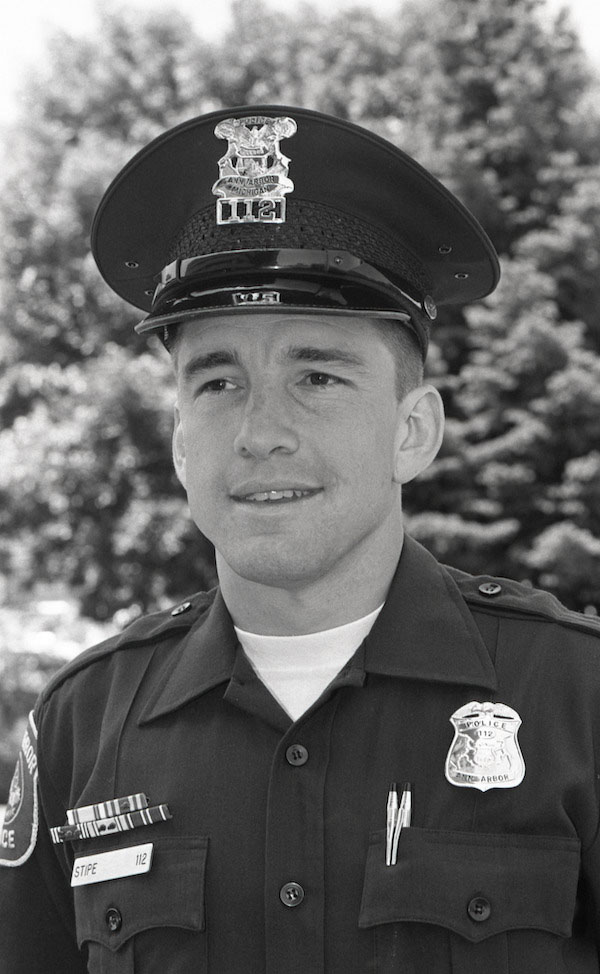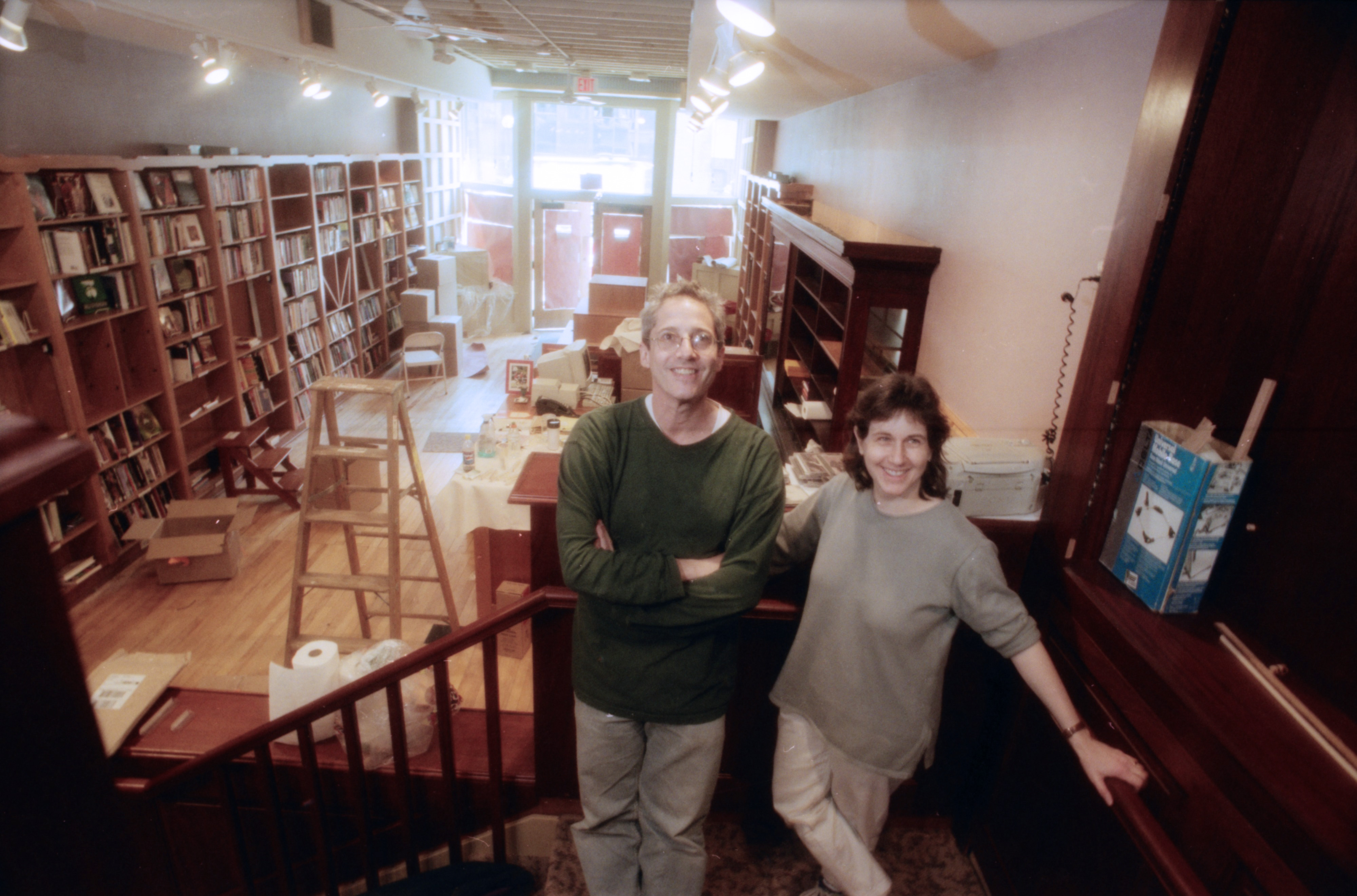
Keith & Martin/Martin & Keith: Elegy for the \aut\BAR
“From 1995 to 2020, Ann Arbor’s Aut/Bar was the mecca for the LGBTQ+ community. Its founders, Martin Contreras and Keith Orr, created a cultural and political hub that bridged the AIDS era with assimilation of the queer community and urban gentrification. This film is both tribute and elegy to a moment of significant hope when Ann Arbor lived up to its reputation for harboring a tolerant and liberal-minded population. It is dedicated to the two men who were at its heart and whose proud determination to make it happen was both fierce and tender.” - Peter Sparling

AADL Talks To: Grace Shackman

Grace Shackman is an author, educator, and former Washtenaw County Commissioner. But she's probably best known as a local historian and a long-time contributor to the Ann Arbor Observer, where she has dug into many fascinating topics of local and regional history. Grace tells us about how she became involved in politics, her research process, and how her interests spurred her beyond her shy nature.
Find more by and about Grace Shackman in our archival collections.

AADL Talks To: Peter Stipe

Author and former Ann Arbor policeman Peter Stipe recounts his journey from being a wayward youth growing up in countercultural Ann Arbor to becoming the most decorated member of the Ann Arbor Police Department. Peter shares memories of his time with the AAPD, including harrowing encounters on emergency calls and the many people and events that helped shape his career. Peter also shares his love of local history and discusses the changes he's seen in the city over the years.
Peter's story is detailed in his 2021 memoir, Badge 112.
You can read and view historical photos about Peter Stipe and the Ann Arbor Police Department, or read other histories of the Ann Arbor Police Department.

There Went The Neighborhood: The Closing of Jones School
As part of Ann Arbor 200, the Ann Arbor District Library and 7 Cylinders Studio (7CS) have produced a documentary film about the closing of Ann Arbor's Jones School. In 1965, the Board of Education closed the majority-Black school. Ann Arbor joined a nationwide trend of school desegregation during the Civil Rights Era. But for these young students, the loss of a neighborhood school foreshadowed changes to their close-knit community. Gentrification came to Ann Arbor on the heels of desegregation.
In the making of this film, 7CS filmmakers and AADL archivists interviewed over thirty former Jones students and Black community leaders. They shared memories of Jones School and "The Old Neighborhood"—the areas now known as Kerrytown and Water Hill. A filmed walking tour, studio interviews, and historical photos form the core of the film. Run time is approximately 40 minutes.
The AADL Archives has many additional materials to explore relating to these topics, including a history of Jones School and dozens of Ann Arbor News articles that appear in the film:

AADL Talks To: Karen Jania
In this episode, Karen Jania, president of the Washtenaw County Historical Society (WCHS), discusses her career in archives and museums. In addition to discussing her work at the WCHS, Karen talks about her long career as head of reference at the Bentley Historical Library, including the many changes in archives work that she witnessed during her tenure, the colleagues who nurtured her through her career, and some of the Bentley's unique collections.
More information in AADL's collection on the Bentley Historical Library and the Washtenaw County Historical Society.

AADL Talks To: Dave and Linda Siglin

In this episode, Dave and Linda Siglin talk about the history of Ann Arbor's beloved folk venue, The Ark, from its humble origins in a house on Hill Street to its thriving location at 316 S. Main Street. Dave and Linda reminisce about some of the famous national and regional talent that has played the venue; the evolution of the business; changes within the folk music industry; and the Ark's signature fundraising event, the Ann Arbor Folk Festival.
Read historical articles about The Ark and the Siglins and the Ann Arbor Folk Festival.

AADL Talks To: The Chenille Sisters
In this episode, AADL Talks To The Chenille Sisters, Ann Arbor's favorite harmonizing trio. They are (left to right, below) Cheryl Dawdy, Grace Morand, and Connie Huber. The Chenille Sisters began singing together at Ann Arbor's Old Town Tavern in 1985. Within a year, they made their first of several appearances on Garrison Keillor’s popular “A Prairie Home Companion” radio program. The trio wrote and toured constantly through the early 2000s, appeared in numerous regional and national venues, and recorded 12 records.
Visit our Chenille Sisters topic portal for more information, documents, and photos covering their history.

AADL Talks To: Bill Zirinsky and Ruth Schekter of Crazy Wisdom
In this episode of AADL Talks To, we interview Bill Zirinsky and Ruth Schekter. Bill and Ruth discuss their history running the Crazy Wisdom Bookstore and the Crazy Wisdom Journal. They also talk about their time in Ann Arbor, including some of the city’s changes over the years. They discuss their experience as a unique “new age” bookstore in a town known for its book shops.

Arwulf Arwulf At WCBN
Video extra from the feature-length documentary Welcome to Commie High from 7 Cylinders Studio.
JCC Conversations | Ritchie Boy – Guy Stern
Guy Stern escaped Nazi Germany in 1937 and subsequently joined the U.S. army where he served as an interrogator of captured German soldiers. Guy and his life story are amazing. This might be our last best chance to hear what life was like in pre war Germany and WWII from someone who was there.